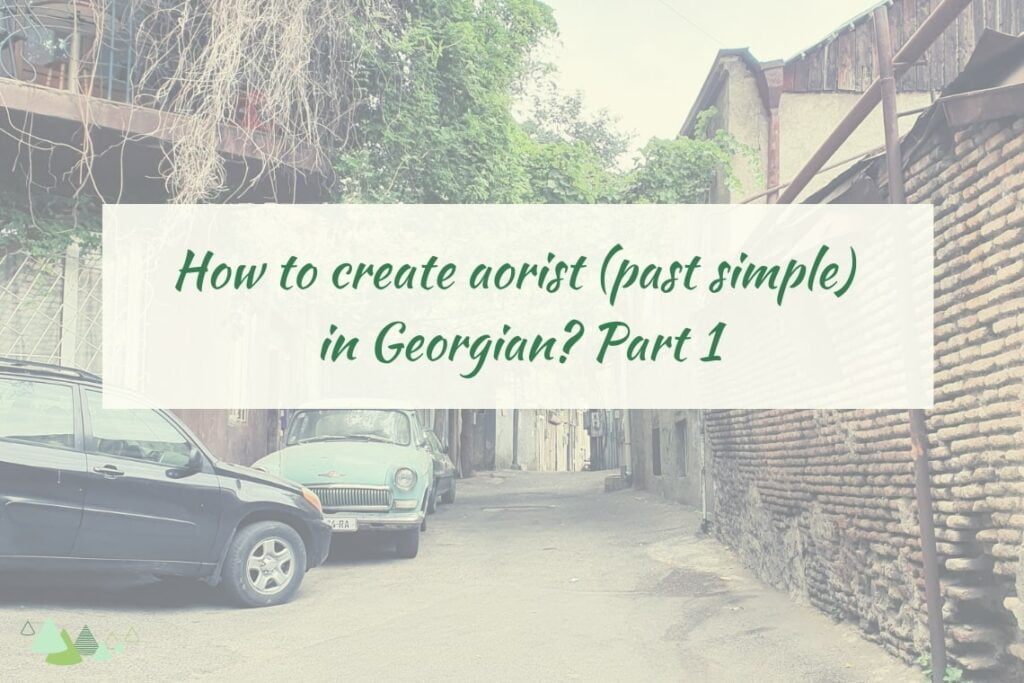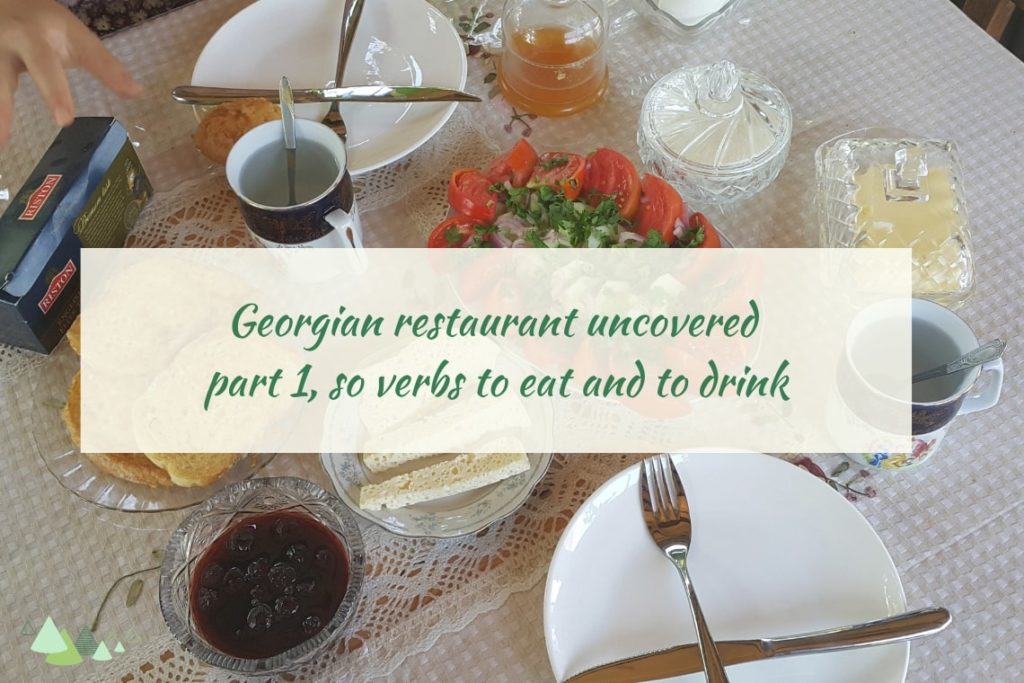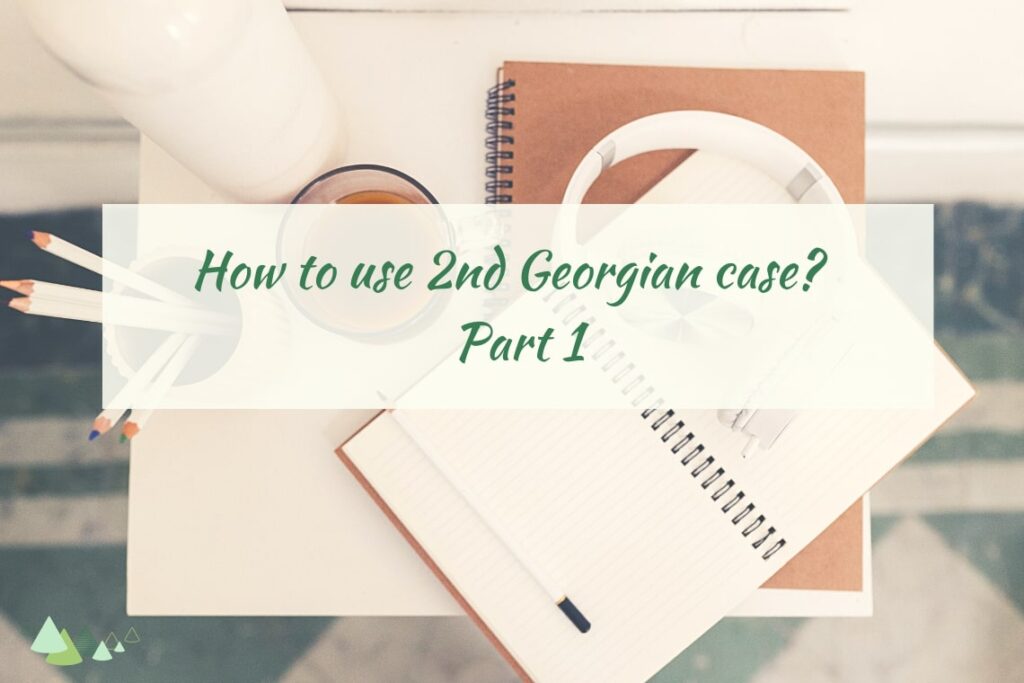To eat in Georgian will become our example of next verb group that you’ll learn in aorist (Georgian tense similar to past simple). Eating in Georgia is huge part of the culture, so you have to know how to say “I ate”.
This is already the second article from the series about aorist (Georgian verb form similar to past simple). If you did not read the first one about aorist and are wondering now when we use this form, the best would be to start there. You’ll find there also conjugation of verbs like: to do, spend time, to live and work.
There is no better way when learning a verb than starting with an infinitive form. To eat in Georgian is შეჭმა. You may notice there is a შე– prefix which will appear in future and aorist form of this verb. Additionally, there are no endings like –ებ or –ობ, as it was with the verbs “to do” or “to work” (so the ones from the first article in the series about aorist). Therefore, if you see other verbs constructed similar to “to eat”, chances are those will conjugate the same. Chances, because there are always some exceptions in each language.
Is this your first meeting with the Georgian verb “to eat”? If yes, you may want to start with it’s present tense form, about which you can read in this article.
How to conjugate verb to eat in aorist?
You already know the general rules and the infinitive form, so it’s high time to learn the aorist conjugation itself. It looks as follows:
მე შევჭამე
შენ შეჭამე
მან შეჭამა
ჩვენ შევჭამეთ
თქვენ შეჭამეთ
მათ შეჭამეს
Comparing it to the aorist forms of “to do” or “to spend time”, you may notice several similarities. Those are present in both, the verbs endings and the subject case. Why so are those different groups of verbs? They conjugate slightly different in other tenses.
Which cases should be used with to eat in aorist?
I am more than happy to tell you the cases are the same as the ones you learned in the first article of the aorist series. That’s why it’s so useful to learn not only separate words and verbs, but also patterns. Then you can leverage from already gained knowledge.
The subject should be in the 2nd case, Ergative. That is why the personal pronouns above look differently than in present tense or future for this verb. If the subject is in Ergative, the direct object (what you eat) will stay in 1st case. Let’s look at the example:
ბიჭმა პური შეჭამა – A boy ate a bread.
Now you have already all the pieces of information to create own sentences with this verb. If you want to learn more Georgian verbs, join our live on-line lessons we organize regularly. During them we teach you how to create sentences with different verbs and grammatical forms. If you do not want to miss any of those, join our newsletter “Caucasian Mail” and be up-to-date with the planned events and new articles.
Check your knowledge
If you want to check your new knowledge do the below quiz. The quizzes are published first on our InstaStory and Facebook profiles and then they are published under the posts. The answers you’ll find below.
Choose the correct sentences:
- დედამ პური შეჭამა
- გუშინ მე ბევრი შევჭამ
- ისინი დესერტი შეჭამეს
How many answers do you know?
Let’s see together:
- დედამ პური შეჭამა – correct
- გუშინ მე ბევრი შევჭამ – not correct
- ისინი დესერტი შეჭამეს – not correct



